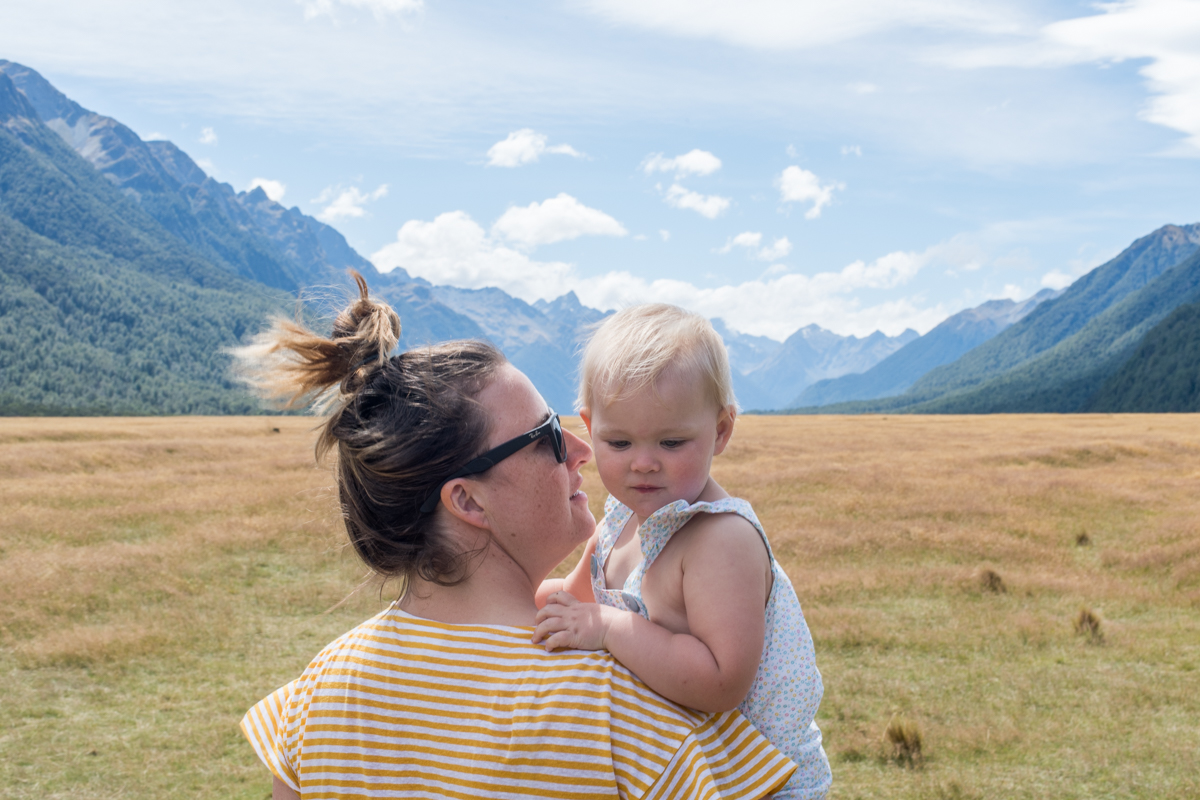Kate Hunter recently chose flexible working over a leadership role in the tech industry (and she would do it again!). Throughout her career, Kate has always been fearless in stepping up to lead, support and essentially kill it in tech, and be both a role model to and sponsor of young women entering the industry.
By putting her family first and choosing flexibility, this mum of one battled with guilt that she was turning her back on her goal to lead young women and support their careers. But from where we stand, we see in Kate only a bold trailblazer, advocating for a fairer future for working parents. What better way to support young women in the industry?
Can you tell us about your career journey so far?
I started out studying photography but dropped out halfway through my course because I learned quicker on the job than writing about theory. Photography led me into a career that didn’t exist when I was in high school—search engine optimisation and marketing.
I joined a start-up website to set up their photography product, but when I established that it wasn’t going to be a viable product I ended up producing websites for their clients. The clients had a lot of questions about search engines so I had to learn—fast!
That was over ten years ago, and since then I’ve worked on SEO, SEM, content and publishing for ASX listed companies and some of the world’s largest websites.
How has becoming a mother changed your perspective on life?
I’m more aware and less accepting of gender inequality. As a woman in tech, and in general, I’ve experienced a lot of sexism. Before I fell pregnant I had accepted that status quo. I’d committed to not making a fuss, but quietly trying to chip away at gender inequality where I wouldn’t make anyone feel uncomfortable.
When I discovered my husband and I were having a girl, I was terrified. What I had previously decided was acceptable for me to experience was not acceptable for my daughter to experience. Since then, I’ve pushed myself out of my comfort zone to call out inequality and the bad behaviour that perpetrates it. It still scares me, but I try to focus on the greater good that can be achieved for the world my daughter will live in as she gets older.
What were the challenges you faced at work through pregnancy, parental leave and returning to work? Can you tell us more about it?
In my area of expertise there is a lack of female representation, particularly in leadership. When I realised I was one of the few women in this space and that I was capable of leadership, I set myself the goal of being the ‘someone like me’ to other women starting out. I hadn’t had a ‘someone like me’ in the companies I’d been working for.
By the time I fell pregnant I had achieved a large chunk of what it took to achieve this goal, but I also found myself fending off lots of conversations from colleagues and my manager that started with, ‘I was thinking…you going on mat leave would be a great opportunity for me to…’. These sentences finished with a suggestion of how they would like to pick off a portion of my role to try on for size. Or for someone else to try on for size.
I had worked hard to develop my skillset and expand my role, and these advances made me insecure and anxious. I don’t think their suggestions were malicious, however I do believe the impact it would have on someone who loved her work but was stepping away to make a big life change, was underestimated. It’s important that parents-to-be who are stepping away from work feel their career is safe, and avoid additional stress and anxiety leading up to, and during this time.
The result was that I worked like I wasn’t pregnant in an effort to stop people seeing my parental leave as anything other than an opportunity for me to experience the wonder of having a child. I worked until 38 weeks and gave birth 36 hours later.
Four and half months into my leave, work got in touch to ask me if I ‘wanted to be involved in’ a major piece of work that I had pitched almost two years earlier. I was still learning to be a mum and wanted to focus solely on my daughter, but felt pressure in their offer. The ‘offer’ felt like a bit of an ultimatum: ‘We’re doing that massive thing you pitched but you don’t get to be involved unless you come back now.’
I returned and my role was deconstructed. The responsibilities that others had ‘tried on’ during my parental leave weren’t handed back to me. I raised it regularly and often but was told to enjoy the reduced responsibilities with the same title and salary. Unfortunately, the project I returned early for didn’t end up kicking off until six months later—one month after I had originally intended to return to work.
What have you learnt from this experience that you would pass onto other women in a similar situation?
Do not compromise your pregnancy and parental leave experience for work, no matter how much you love your job. You may be awesome at what you do, but the reality is that if you’re not there, someone else will do the work and the world won’t end.
Be loyal to yourself and your plans for your pregnancy, parental leave and return to work. If things at work don’t go to plan, with determination and the right attitude you will always land on your feet.
What can companies do to better support working women?
The biggest stressor I experienced returning to work was a lack of genuine empathy and understanding from managers and peers towards my pregnancy, leave and returning to work experience. To combat this, my former colleague had the best suggestion I’ve heard: coaching for managers, team members and peers of those who are returning to work post parental leave, to help them better understand the parental leave journey. It seems so simple and yet so beneficial.
Also, approving flexible working arrangements to remove the stress associated with childcare pickups and drop offs, sick kids, etc.
As an example, so many people ignored my blocked out calendar on Fridays when I didn’t work that I felt compelled to change my Slack handle to ‘Kate-does-not-work-Fridays’. When colleagues booked over my blocked out times the inference was that I was expendable, or that I’d ‘dial in’ because what I blocked out in my calendar couldn’t be that important. This left me feeling like I was an inconvenience, or worse, slack, compared to everyone else.
You were offered two different roles from two other companies, one with an amazing title with little work flexibility and the other with complete flexibility, but no title. What was your choice?
Complete flexibility, no title.
What was the reason behind your choice? What influenced your decision?
It was a tough decision. The title represented achieving my goal of being ‘someone like me’ to women starting out in my industry, and it was within a company I have a huge amount of respect for (and is on my wish list of companies I’d love to work for). I felt like I’d turned my back on a goal that was important to me by not taking this role.
The company offering flexibility (a privately-owned Australian practice management software company) was also a company I had on my wish list. They don’t do titles because their employees work on specialties rather than a specific remit, which allows everyone to work on what they do best, work with whomever they want to leverage each other’s skills, and choose what they want to work on (what they want to do more of or what they want to learn).
This company offered me a rare opportunity to go back to the complete remit of work I had before I went on parental leave, and also grow my skillset. 100% remote and flexible hours would not only give me all the guilt-free-working-parent flexibility I wanted, but after sacrificing six months of parental leave in my previous role, give me more time with my daughter, and allow me to make that mistake up to her and myself.
You have now started in a new role. How has this supported you to work flexibly?
The better question is, ‘How hasn’t it?’ My employer, Cliniko, is special. Cliniko gives all of their employees 100% remote work and flexible hours. When we have a team meetup, it is assumed our partner and kids will be with us. Oh, and their full-time working week is 30 hours. And then there’s the unlimited leave.
This is life changing. My daughter goes to childcare three days per week and I do the bulk of my work on those days, fitting in an afternoon nap to recharge. My daughter is home with me the other two weekdays, and on those days I work when she naps and then a couple of hours in the evening after dinner. When either of us is sick, I let work know and there’s no guilt trip for taking time off, no attempting to work through being sick, or working from home trying to juggle a sick toddler.
Oh, and on those days when we’ve had a really rough night, I don’t have to get dressed and pretend my brain isn’t on fire. I drop a note in the #generalchat on our Slack channel—‘Rough night, be around later’—and then I go back to bed (if it’s a childcare day!).
Favourite time of the day is … that 30 minutes around 9AM when my daughter isn’t hungry, ready for a nap, bored, clingy, asking for a dummy, and is just plain content in the world.
Instagram sites that inspire you … @lingo_mama is a Melbourne-based mum who takes you on her language learning trips with her toddler and husband via Insta and organises language learning meetups. Raising a toddler and learning new languages while blogging about it blows my mind.
I’m happiest when … I find myself in the rare intersection of a weekend: sunshine through our loungeroom window, no pressing chores, all of us (husband, daughter, dog, cat) in the loungeroom, my daughter deeply engaged in an activity, and we have nowhere to be.
I’m addicted to … Darrell Lea liquorice allsorts.
Favourite wardrobe staple for work … can I brag that I don’t have work wardrobe staples because I work remotely?
Favourite wardrobe staple for weekend … my Bared Footwear sneakers.
My role model is … Tina Fey.
Heels or flats? Flats.







